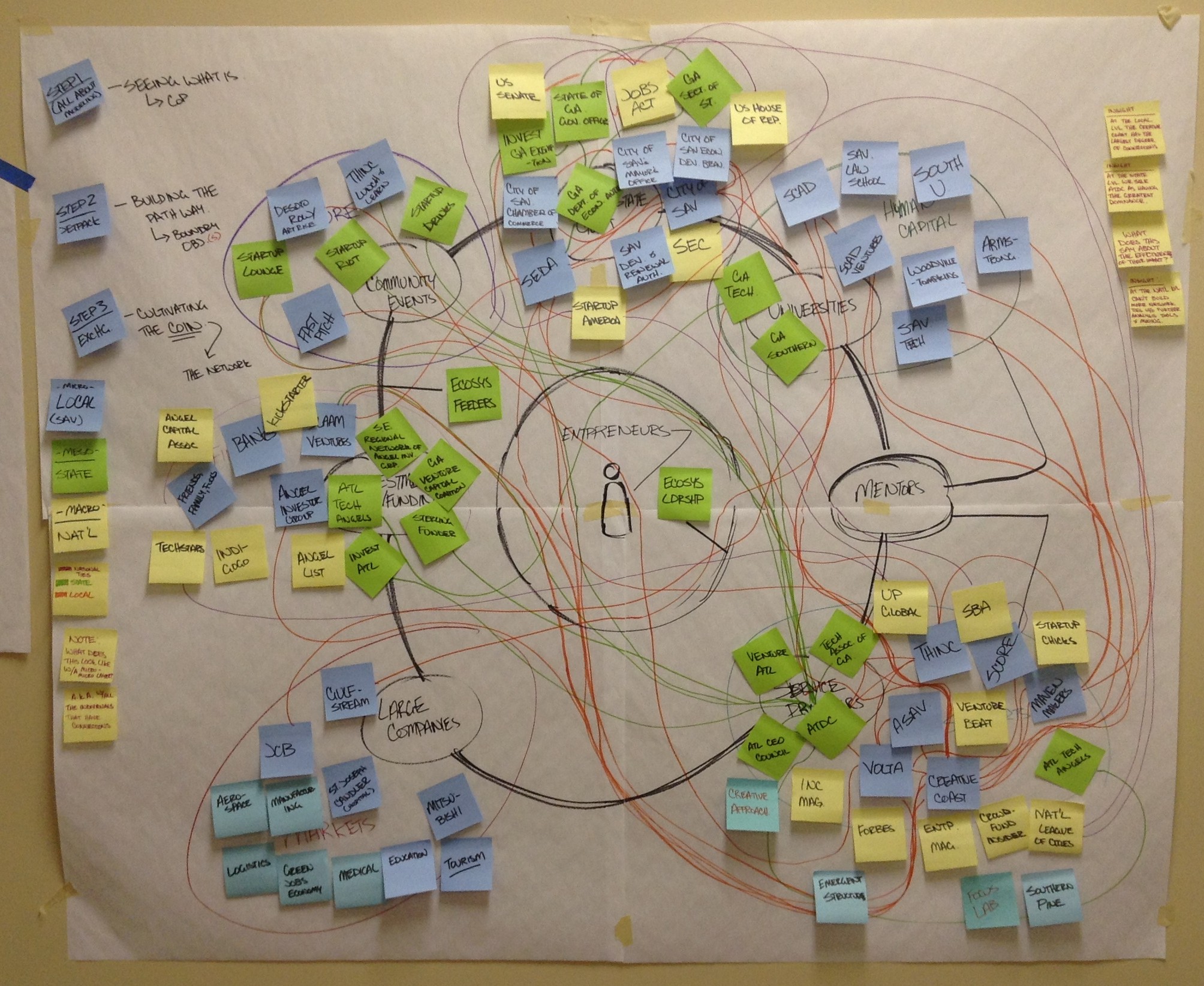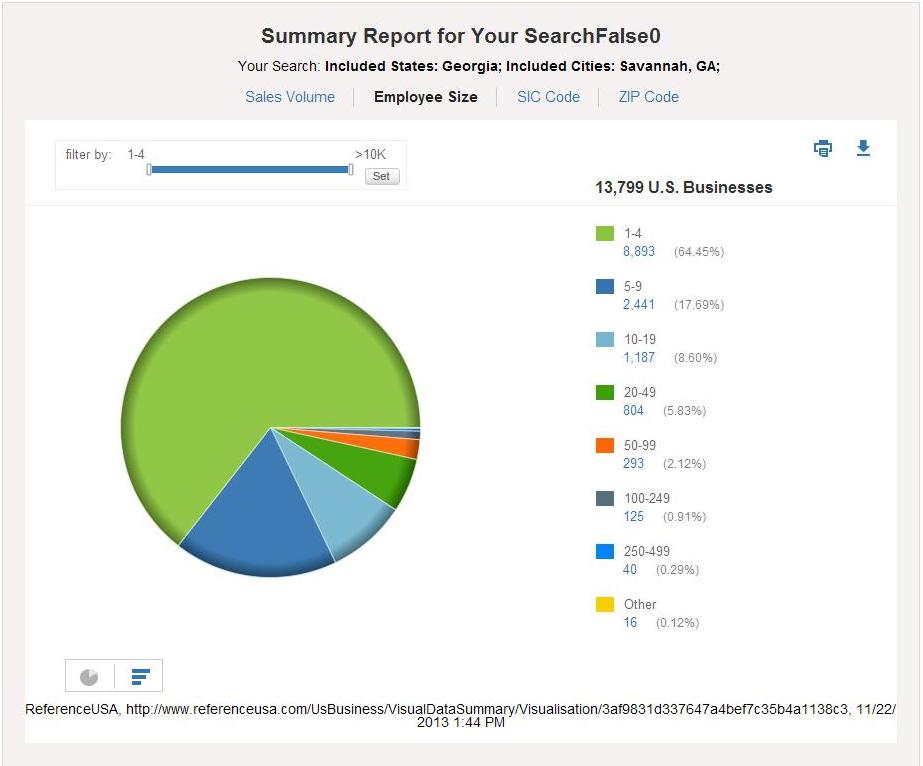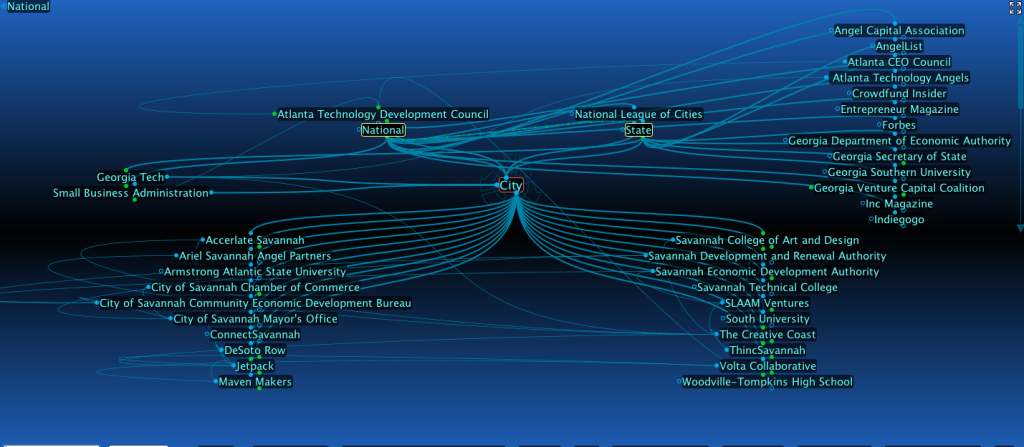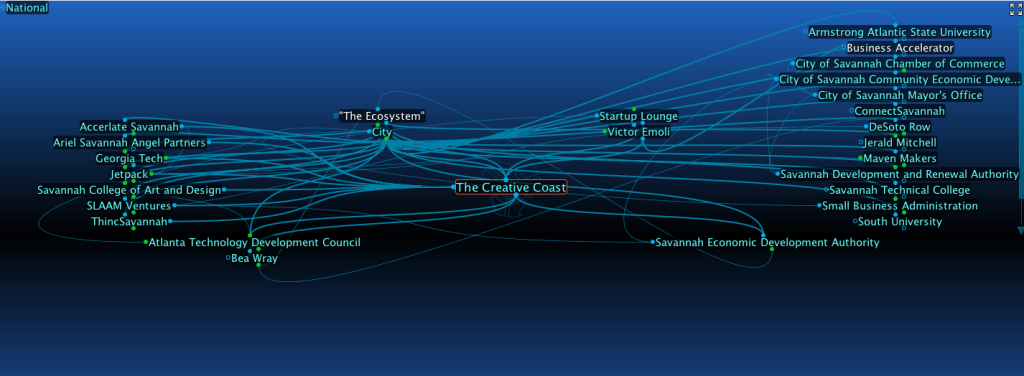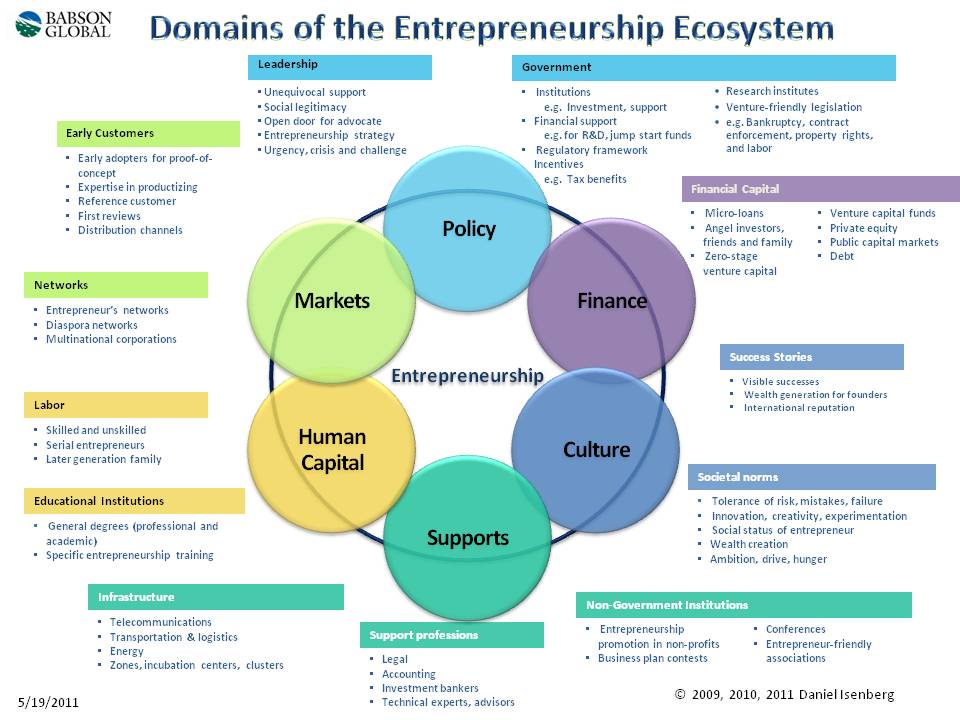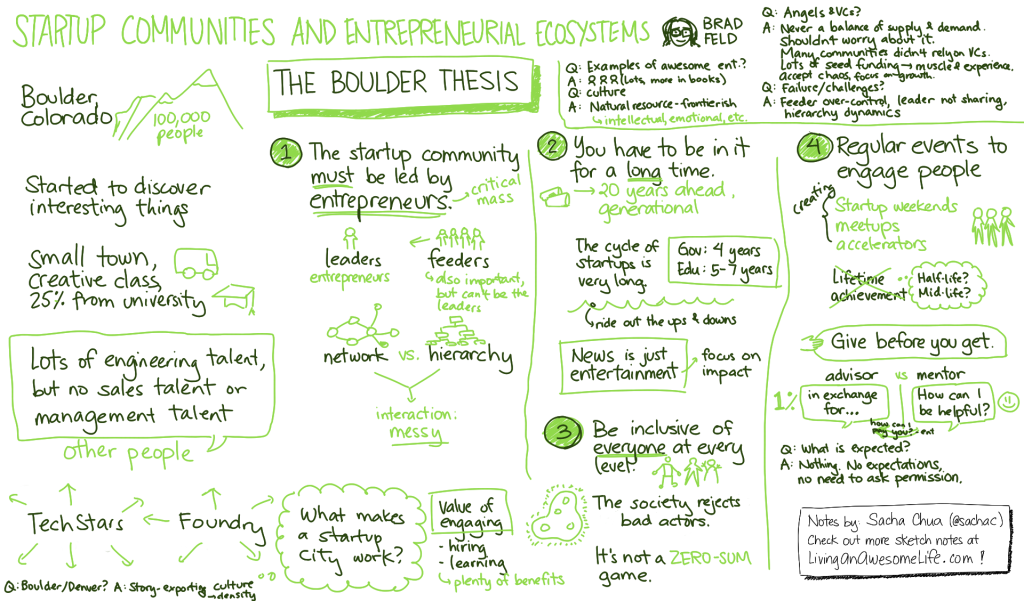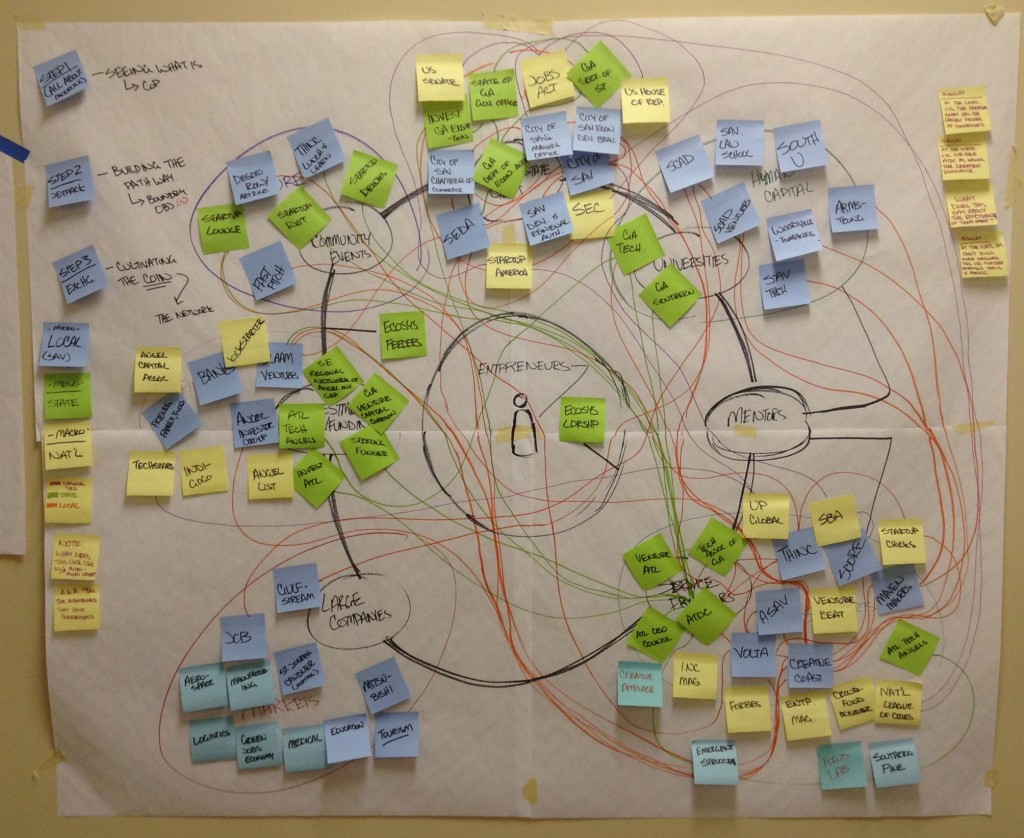What does it mean to have an entrepreneurial economy and to have one here in Savannah no less? Furthermore, how do you define entrepreneurship, is it a personality type, archetype, or something more? Today I am here to talk a little bit about the evolving network and ecosystem that is Savannah’s entrepreneurial economy and discussing the value of visualizing networks to better understand the health, assets, strengths, and weaknesses of an economy. This is the first time, to my knowledge, that this data has been organized (and yes, it’s still incomplete) and placed out into the public where it belongs.
Before I jump too far ahead, I think it is necessary to give a little bit of an introduction. I am at my heart a community advocate, designer, researcher, and entrepreneur. Over the course of the past two years I’ve been proactive within the startup community specifically in social innovation and community research. I currently am a partner with Volta Collaborative a design and social innovation firm whose mission is to aid in cultivating a startup culture through design and innovation – and as you will see it is but one of many organizations working within this sector.
If you are to dive into the literature, an entrepreneur is typically defined as an individual who finds an opportunity and pursues the development of that opportunity. If you dive a little deeper you will begin to discover there are two genuses of entrepreneurs, what the Kauffman Foundation refers to as Small and Medium Enterprise (SME) and Innovation Driven Enterprise (IDE). Savannah is stuffed with the former, yet lean on the later. SME’s make up the backbone of Savannah’s community, a whopping 82% of the local economy consists of ventures with nine employees or less. These are your local mom-and-pop shops, freelancers, and anyone else working for themselves. However, IDEs are focused on scalability and reaching national and global markets, a prime example that is overlooked in Savannah is SCAD, one of the city’s most successful startups by far. While SMEs may create jobs; they typically do so only in small numbers where as IDEs have a far larger opportunity of generating larger employment in local economies.
Startup Community of Practice
So what does it mean to have a community that is rallied around this practice that we call entrepreneurship? It means that is necessary to take a step towards the abstract and begin examining Savannah in systems, or in this case ecosystems. Savannah’s startup community is felt but largely unheard, yet it is richly and deeply vibrant if one knows where to look and which weak signals to tap into. The networks that exist are a live and growing constantly brining in new assets and links to the community as it evolves.
Not only is it necessary to think of the community as an ecosystem, one where each entity has a symbiotic relationship to the next, even if that involves competition rather than collaboration, it is also necessary to think in networks. As our community continues to grow the ties that bind each organization and individual will only become stronger. Savannah is dense with connections full of people doing and trying new things with many individuals connected across organizations and coalitions. I’m sure you have noticed some of this interconnection by way of the images included so far.
The Models
Capitalizing on frameworks and models are a great approach to understanding how the many various groups are interconnected across many different sectors. In the case of this research project, I have been leveraging a fusion between two models one put forth by Babson College and one proposed by Brand Feld called the “Boulder Thesis” in his book Startup Communities. There are very many similarities between the two, which lends the two working very well when overlaid. The merger provides a dynamic and flexible marriage for identifying a variety of different and core community assets.
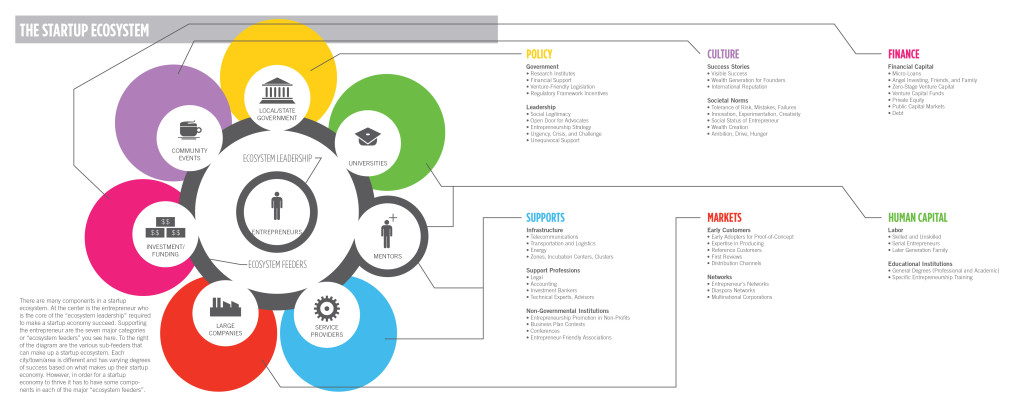
A Startup Ecosystem model that is a merger of the two frameworks. Graphic reproduced from “The Startup Equation”
The Current Mapping
Much of the work that has been done so far is still visually raw, but will soon be transformed into a new digital space for public access. The current process has involved a variety of different forms of data gathering and development. The digital images that you have seen so far use software that is called The Brain to help mark connections between different stakeholders in the community. This was a starting point for gaining understanding, then it was followed up with data mapping using Post-Its and paper and the merged ecosystem framework to plot the stakeholder assets. What I have tried to do is plot connections between organizations based on a series of criteria. The first are direct links such as partners listed on a website. The second point is based on projects or events where groups have collaborated in the past. The final is derived from formal and informal interview data where individuals have confirmed or discussed connections.
The organizations that are currently listed are categorized by color too: local (blue), state (green), and national (yellow). Applying a coding system has helped to provide some depth in this current “flat” visualization. Adding on to this, each organization has been placed within the core asset sectors based upon their missions, visions, and active engagement within the community ecosystem. So, that makes it important to point out that while an entity might be listed in one sector it is also possible for it to reside in more than one sector as well.
As the project continues to move forward so too will new connections be added and old ones removed. I think it would be lovely for this project to evolve over the coming years giving way to a video visualization of the networks evolution over time.
Entrepreneurial Generations
Already there exists plenty of research and data on startup ecosystems across the globe about what makes them strong, weak, or otherwise. Two projects worth examining specifically are the Startup Genome and Global Entrepreneurship Monitor. And, as we all have also already seen via the myriad blog posts and news articles, Savannah has been compared numerous times with other cities like Boulder (a good close comparison) with talks of plans and turning points. I won’t lie, while there is the air of a tipping point in motion the dynamics of the community are evolving and if examined hard enough that change can be seen.
However, I am sad to say Savannah will never be a Silicon Valley or a Boston, but it is flourishing into its own. Many people in this town talk of a singular plan that will be the sole definitive answer, but movements and communities take time with a lot of little things that build into big things – even Rome wasn’t built in a day.
This brings me to my third point for understanding the community in Savannah; it is also necessary to think in generations. For startup communities to truly come into their own it takes decades of trial and error, success and failure. Both Silicon Valley and Boston have 40 years on us, New York another 20, Austin and Boulder 10 to 15. The point is to be an advocate it takes time and a willingness to hold and push for a vision that is potentially going outlast your stay and participation.
In my opinion, Savannah is growing into its second generation of a startup community. My view on this is that the first generation is about establishing the assets and understanding what exists from which a community can then leverage. This second generation is about the emergence of networks and the setting roots of a culture around entrepreneurship. With each new day new possibilities for connections sprout, grow, or die but with this comes a tipping point, a realization of the dynamic ongoing and diversity of the ecosystem and interrelations of the organizations and individuals that are active in the network. Things are changing and if you look hard enough you can see it.
Understanding through research
So why is any of this important? Because letting the data speak for itself is a start and secondly it’s important because this is a community project that has involved a variety of different organizations and stakeholders. And lastly, it’s important because this is not only by the community but also for the community. This is a chance to put the conversation out there and ask for contribution. The data is incomplete and will always be so as the nature of networks and systems evolve thus making it detrimental to be inclusive and open. That my task to you, get involved and join in, help this project grow and help it expand.
In the coming months, it is my goal to continue to cultivate this and establish this online for people to engage with and help develop in a digital format. This version is still raw and as I continue to work a more and more refined version will become developed. So stay tuned and stay active. My vision is to see a strong entrepreneurial culture grow and thrive, and I know it will thanks to the many people and organizations that are pushing for its future.

